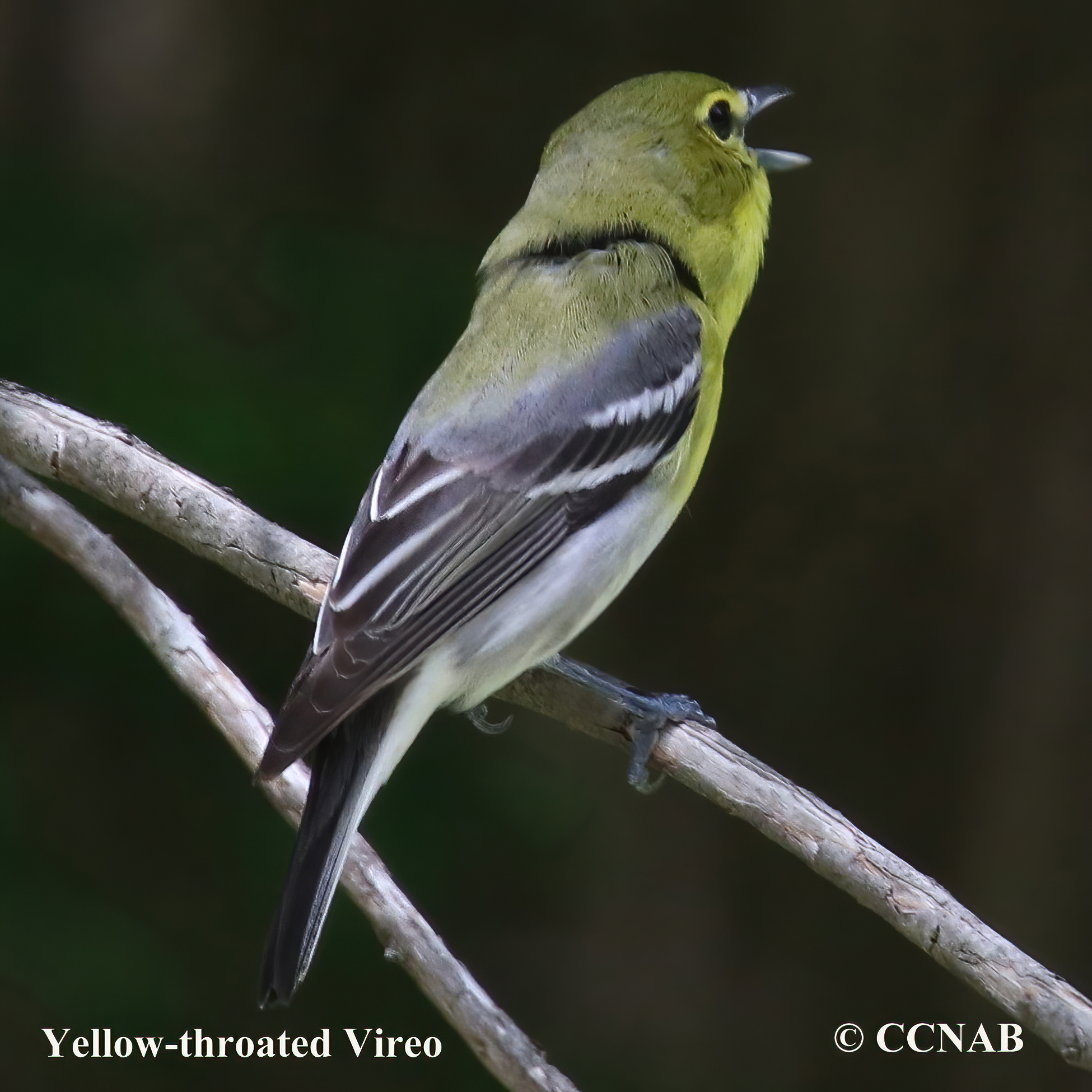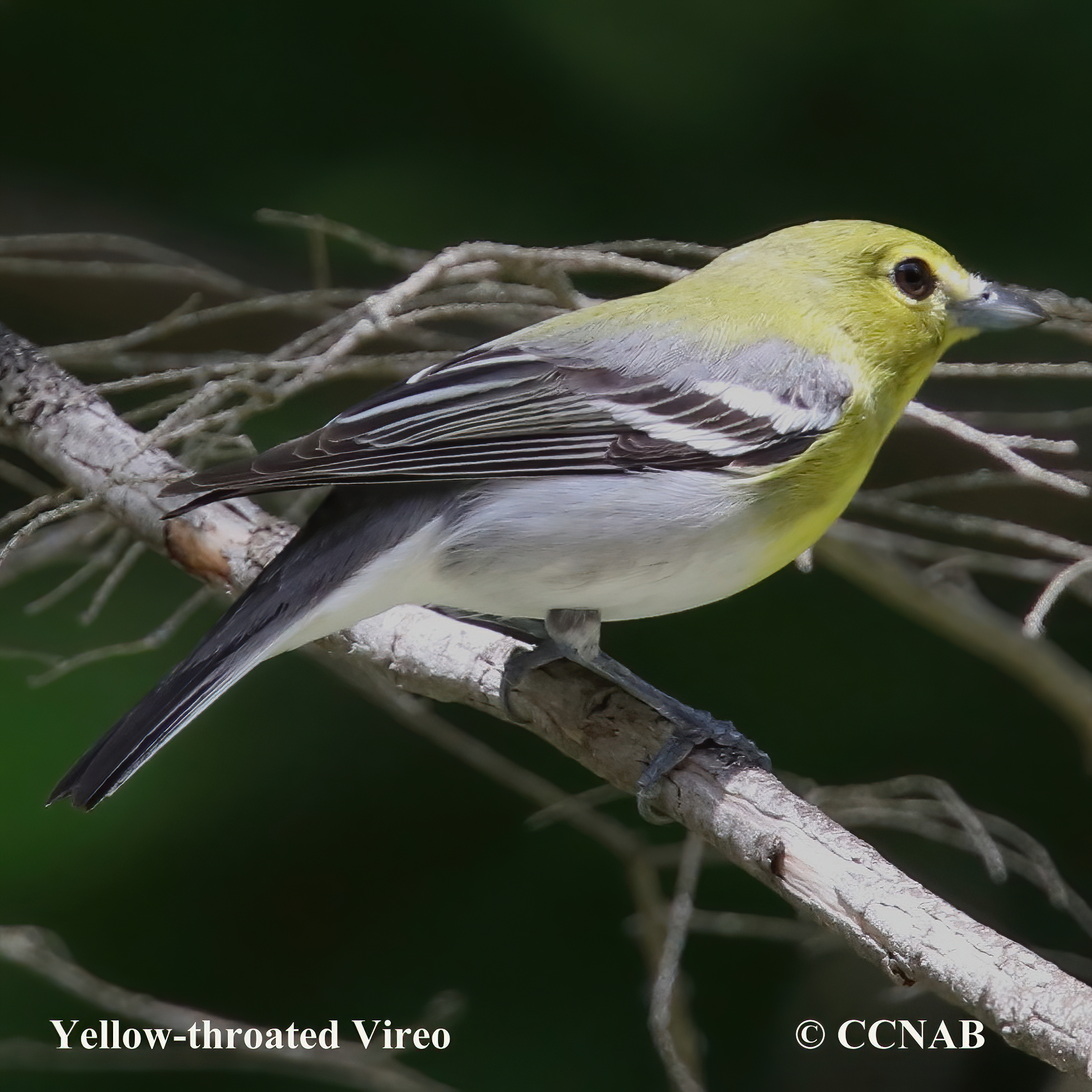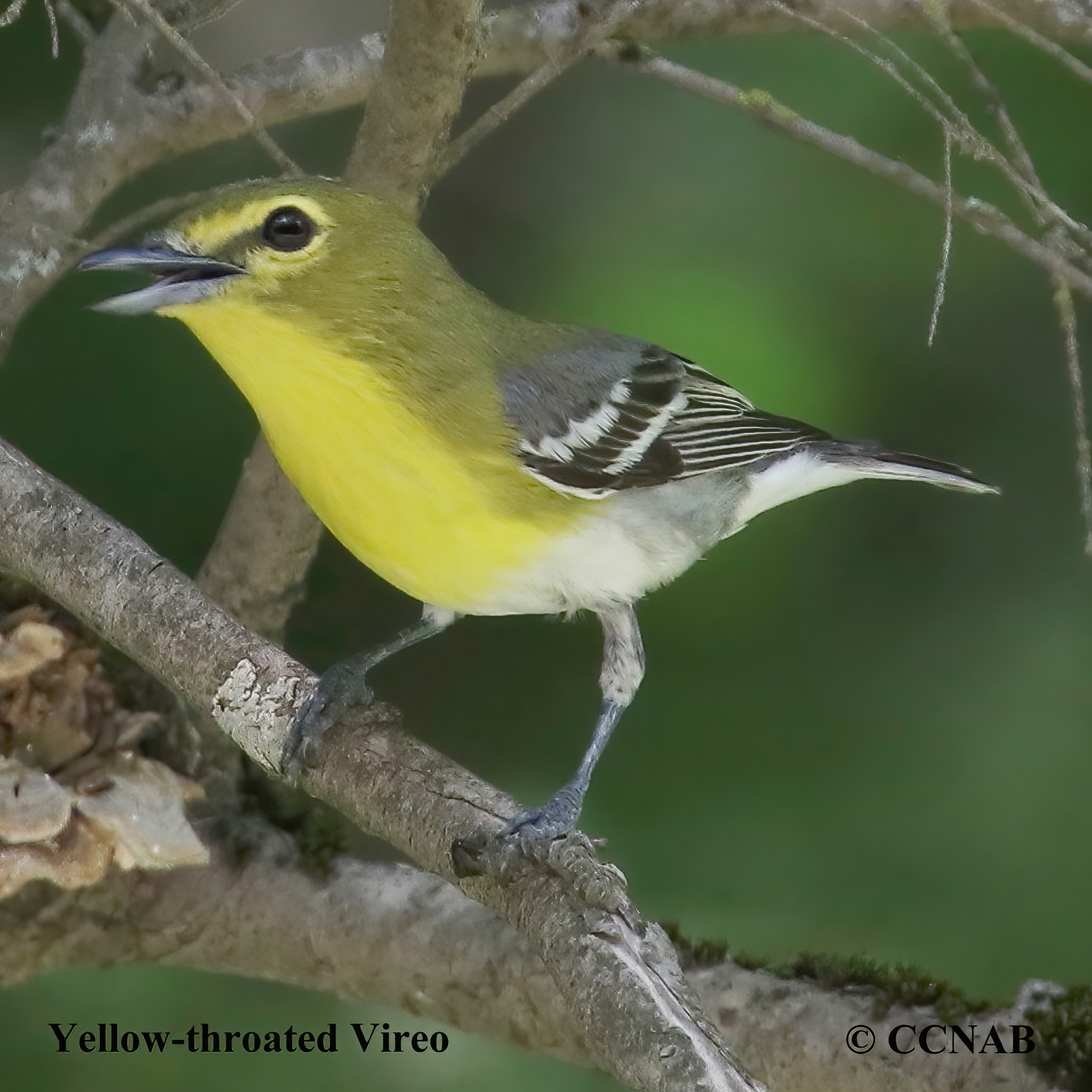North American Bird Search Box
This search box can be used to find bird species using bird's english, french or latin name, or to identify bird by its 4 letter Alpha Code
Field Guide for all the Birds of North America
Yellow-throated Vireo
4 Letter (english names) Alpha Code: YTVI (1)
Viréo à gorge jaune
Vireo flavifrons
Information, images and range maps on over 1,000 birds of North America, including sub-species, vagrants, introduced birds and possibilities
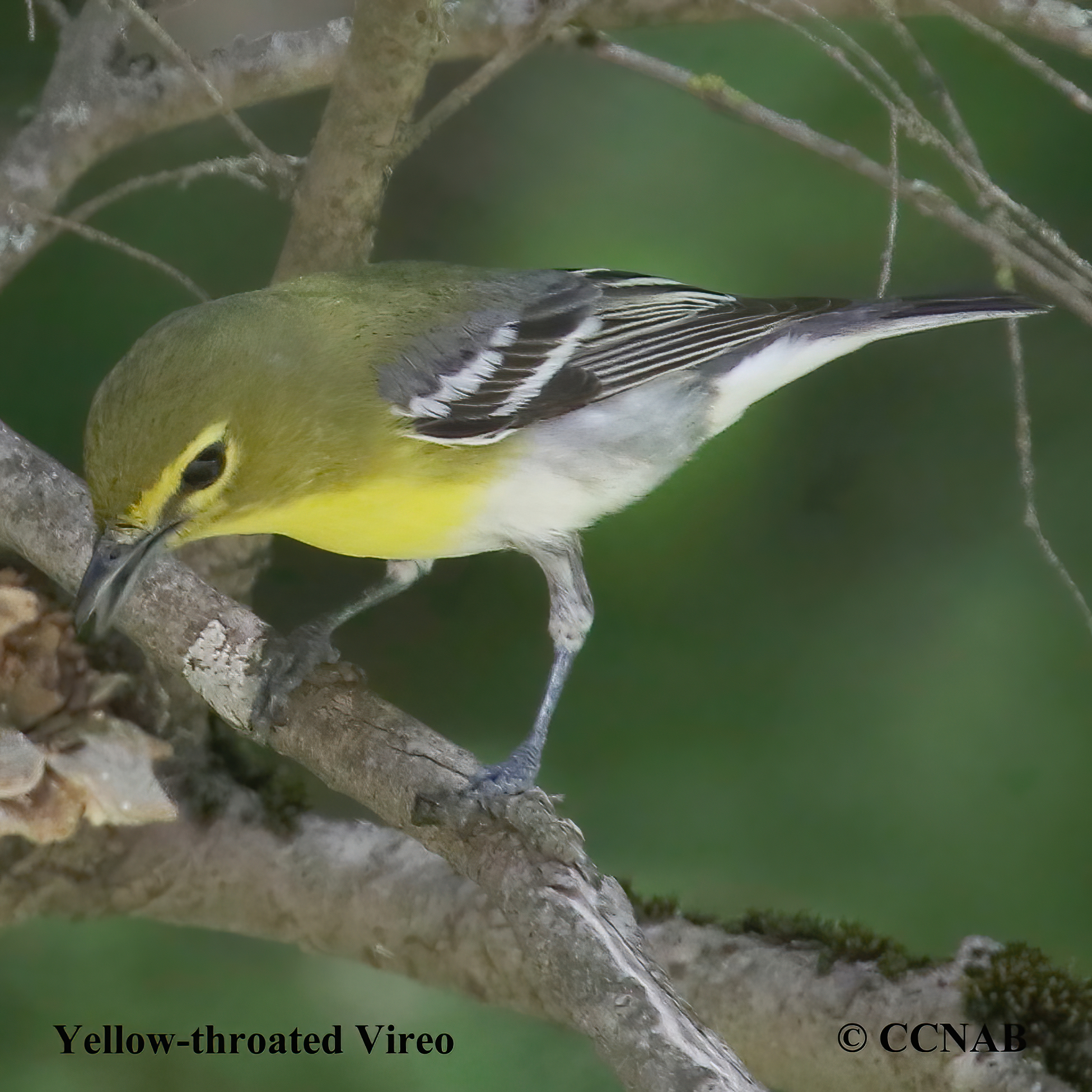
Species: The Yellow-throated Vireo (Vireo flavifrons) is one of the larger members of the vireo family seen in North America. Although at times it may be confused with the Pine Warbler. This vireo is a stockier and slower moving bird when observed in its habitat. It prefers open woodland, forest edges and orchards. Like other vireo species its' main diet is insects and may eat fruit and seeds in the winter months.
Distinctions: The male and female are similar looking in appearance. It has a large bill with a visible hook at the end of the upper bill, same identifying features seen in other vireos. Yellowish-green cap and back, yellow lores and spectacles around eyes, yellow throat and upper breast, white lower body and undertail, gray above, two white wing bars and black looking primaries.
Voice: Similar song to Red-eyed Vireo, multiple notes, slower song. Sings as it moves about through the mid and top sections of conifer and deciduous trees.
Nesting: Three to five white eggs, speckled with brown or black spots. Suspended cup like nest, built in the fork of branches. The nest is composed of strips of wood bark, plant fibres and other fine materials, lined with spiderwebs and lichen.
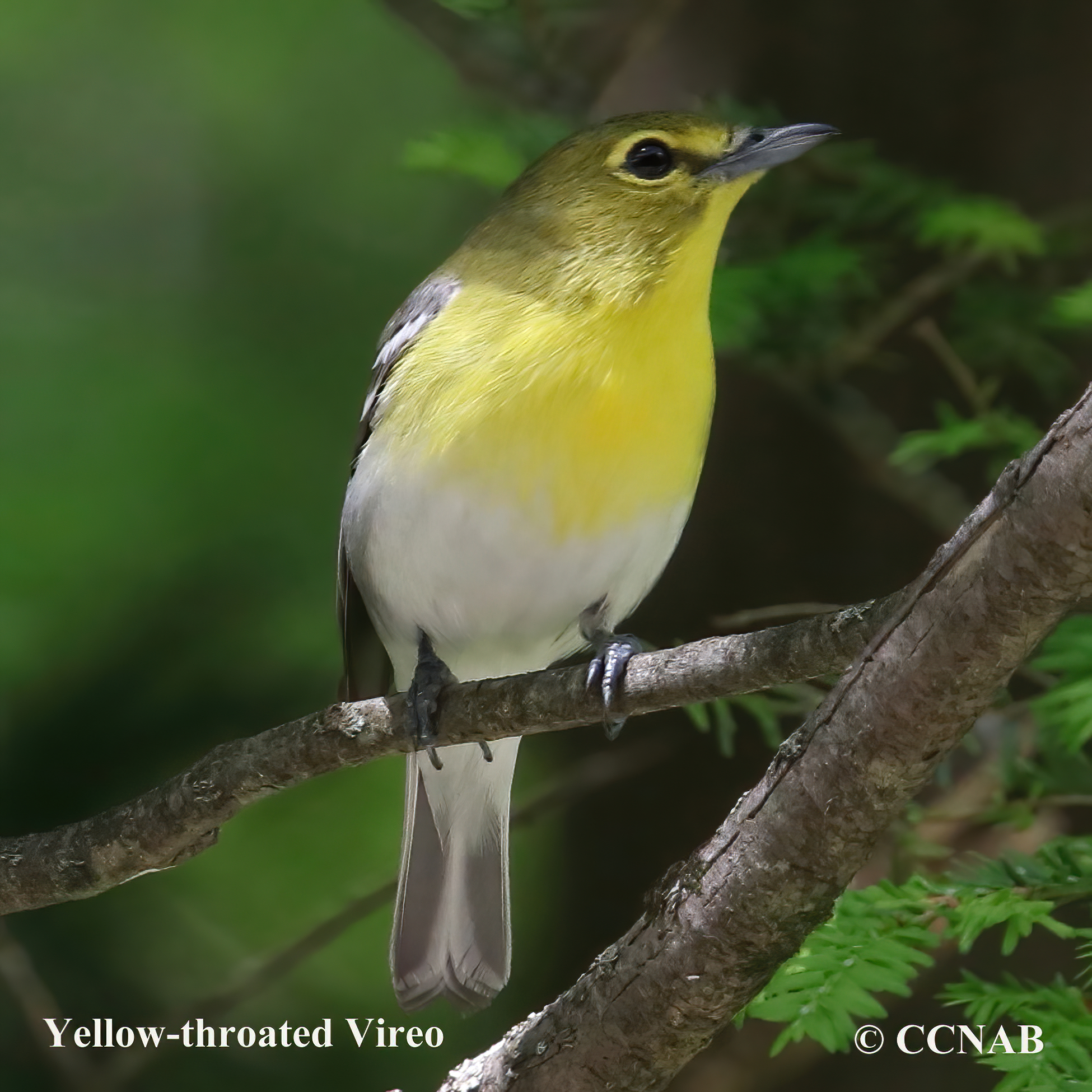
Life, Habitat & Pictures of North American Vireos
| B L | W W | W | Family | Latin Name |
|---|---|---|---|---|
| 5.5" 14cm | 9.5" 24.1cm | 0.63oz 17.9g | Vireonidae | Vireo flavifrons |
North American Birds Videos
- Click here - Singing
- Click here - Singing
- Click here - Singing
North American Birds Calls
- Click here
- Click here
- Summer
- Year Around
- Winter
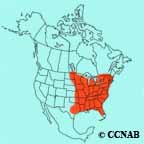
Distribution: Found throughout eastern North America, from southern Quebec, west to southern Manitoba, to southern Texas, east to Florida and north to Maine. It spends its winters on the Caribbean islands and in the tropics and arrives back on the breeding grounds in late April to early May.
Reference to Other Bird Site:
ABA - American Birding Association This site represents an organization that maintains official records of all birds species that have been proven to have been seen inside the perimeters of the North American Continent and the surrounding bodies of water. Regular revised versions are posted to keep the bird list current at all times. This is the list used by all serious birders over their lifetime. You may be aware of the movie called the "Big Year". It was with this list that all the competing birders used in an attempt to set a new record as to how many bird species that could be seen by an individual birder in one calendar year.
